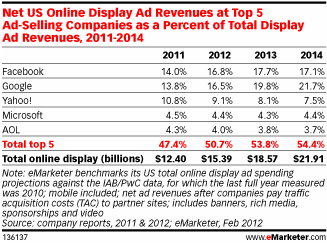The recent Facebook IPO and surrounding uproar has created a robust discussion about the future of online advertising business models.
Advertising works for a couple of fundamental reasons. Advertising works when it helps someone find something that they want or need. Advertising works when it makes someone realize they have a want or need. And advertising works when it helps someone discover an alternative to a product or service they already use.
My billboard has a voice
As a kid, I remember practicing my newfound reading skills with the billboards along Interstate 80 from Sacramento into the Sierra Nevada Mountains. I recall my parents being amused. In retrospect, I wonder if the billboard producers and sponsors knew their message would have a soundtrack. I also remember being fascinated by the Yellow Pages. In it, you could find everything from bicycle repair to Chinese food. The Yellow Pages was almost always on the table to plan our Saturday errands. I remember discovering sugary cereals on Saturday morning television, too. It seemed that television advertising was there to help you discover all the things you didn’t know you needed, or wanted. In the 1960s, advertising was still novel, useful, and entertaining.
Fast-forward five decades, and advertising has lost much of its luster. Online advertising is caught in a downward pricing spiral driven by a glut of display advertising inventory. Display advertising on the web is still sold, created, and evaluated like print advertising. There is, of course, one critical exception: click rates do measure one element of audience engagement.
[text_ad]
Facebook floods the marketplace
While a handful of large websites continue to dominate the quest for advertising revenue, Facebook has joined the party with a glut of low-priced, old-fashioned, interruption-based display advertising. Industry pundits far and wide have unsurprisingly predicted that this additional inventory will continue to drive display advertising prices down.
The rise of contextual advertising
While all the above is happening on a national stage driven by brands like General Foods and General Motors, there are a number of advertising business models that are working just fine. The ubiquitous Google AdWords program is the most robust example, a modern day straight-up version of the Yellow Pages. Saturday morning errands are now driven by Google search. Special interest publishers from FDA News to The Motley Fool are making a living selling their own premium information products. And thousands of niche websites make a living aggregating audiences so specialized that sponsors happily line up to be associated with their content and brand.
The death of general interest advertising
While some pundits have suggested that the Facebook Fallacy may eventually trigger the demise of online advertising for large general-interest brands, I suspect that won’t happen. Instead the glut will grow and prices will continue to fall. The cost of creative will continue to rise as a percentage of overall display advertising budgets as it becomes cheaper, and cheaper to buy online advertising media. Other pundits suggest that segmentation, targeting, video, and rich media will eventually usher in a new era of highly effective digital advertising for big brands. Time will tell.
For the moment, I’m happy to be in the company of special interest publishers.




Great post, Don. Can’t wait to see the impact that Facebook’s new inline ads, or promoted posts will have. They blend in so seamlessly with the timeline (anti-billboard) and remind me of how “seamless” Google ads once were before people started recognizing them as ads.